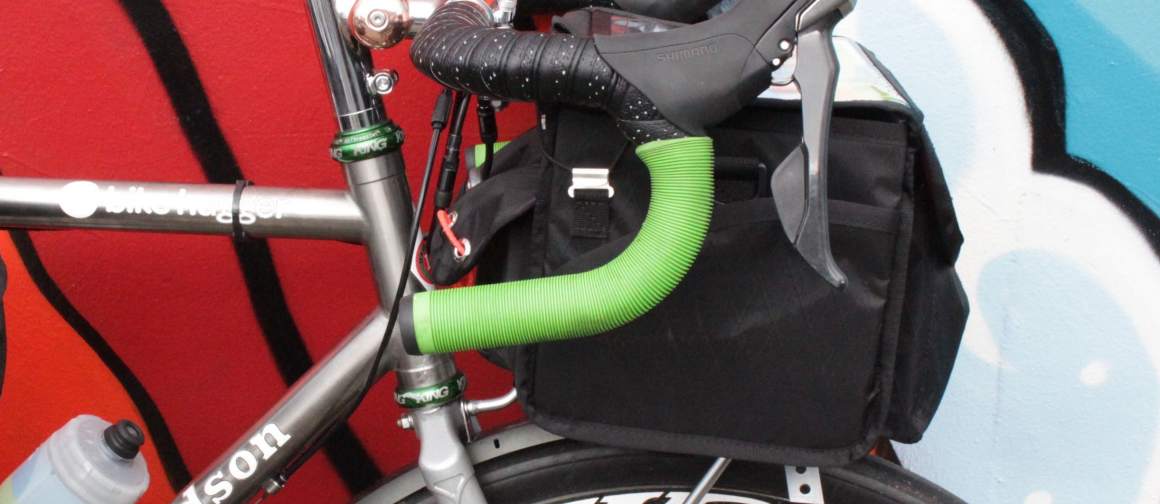
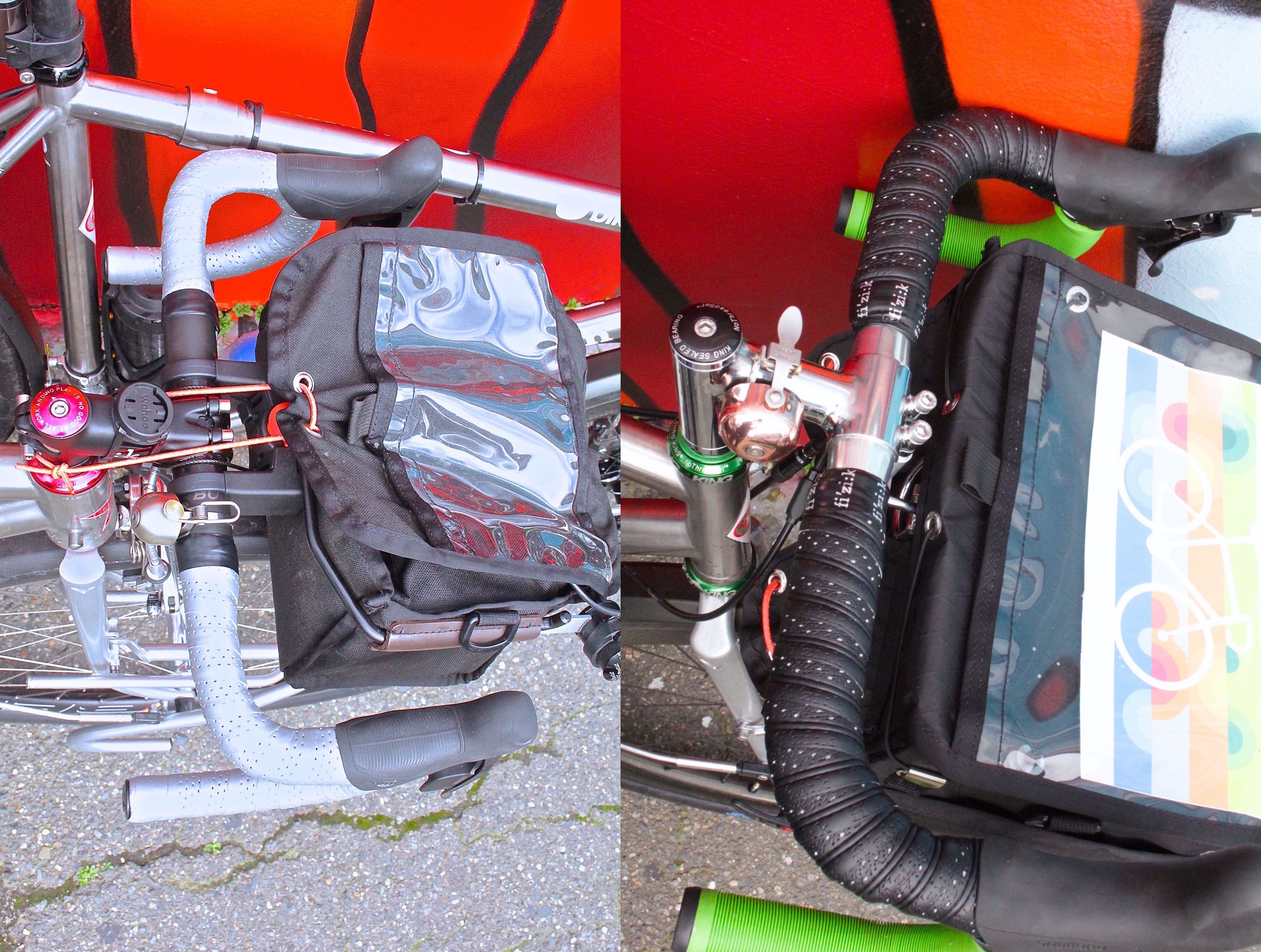
As discussed on Bike Hugger in the past, the road bike’s dropbar has evolved quite a bit since the golden era of cycling, and most recently the bar shape has changed to compliment modern intergrated brake/shift levers. While most dropbars on the current market follow the popular “compact” bend template, some riders may find that their needs are better served by a dropbar that shares similarities to designs from previous eras.
In this first post of a three part series, we will look at how the modern compact handlebar compares to older styles, and why you might want something a little different if you are using a front bag.
Three or four decades ago, one could probably categorize all the popular dropbar designs into about five types. The Cinelli #64 typified the medium drop, squared shoulders, and downward angled ramps supposedly favored by stage racers and Italians, while the deep drop Cinelli #66 was said to be the Belgian preference, offering a low position on the drop for motoring into the wind. The Cinelli #65 roughly had the drop and reach of the #64, but the #65 bar features a large radius that curves immediately outboard of the stem to the hook, eliminating most of the ramp behind the levers to give clearance for the rider’s forearms while sprinting hard. This type was called a criterium bar, though the Italian Felice Gimondi apparently chose this shape during his long career as a stage racer. Meanwhile, the randonneur style handlebar featured shoulders that swept up and back before leading into long ramps behind the levers. Many English and French manufacturers offered this shape to touring riders, but today the Nitto B135 bar carries the torch for this type. Lastly there were the long reach (100-120mm), square shoulder bars, with ramps virtually parallel to the bottom section of the drops, that proved popular among the French for both touring riders and racers. Perhaps the best known example from back in the day was the Atax Philippe Professionnel.
Skip ahead to the ubiquitous compact dropbar of today, which has evolved to compliment the larger shape and ergonomics of integrated shift/brake levers. For any of compact handebar, one would expect to see a drop measurement of 120-130mm and a reach of 70-80mm. Beyond these dimensions, the ramps run at a very shallow angle to meet a modern integrated lever at the same lever, so that the bar and lever body form one unbroken shelf for the rider’s hands.
Nowadays riders typically rest their hands on the hoods as the default position while riding, perhaps using a lower handlebar height. The shallower drop of the compact bar keeps the lower hand position in a useable height. Lastly the hook of a compact bar changes from a tight radius just below the ramps (where the levers affix) to a larger, sweeping curve down to the bar’s ends. Though there are some riders who prefer a handlebar with a more traditionally bent hook, even those “classic”-style bars on the current market tend to have much shallower angled ramps than road bars 20 years ago, in order to compliment today’s levers.
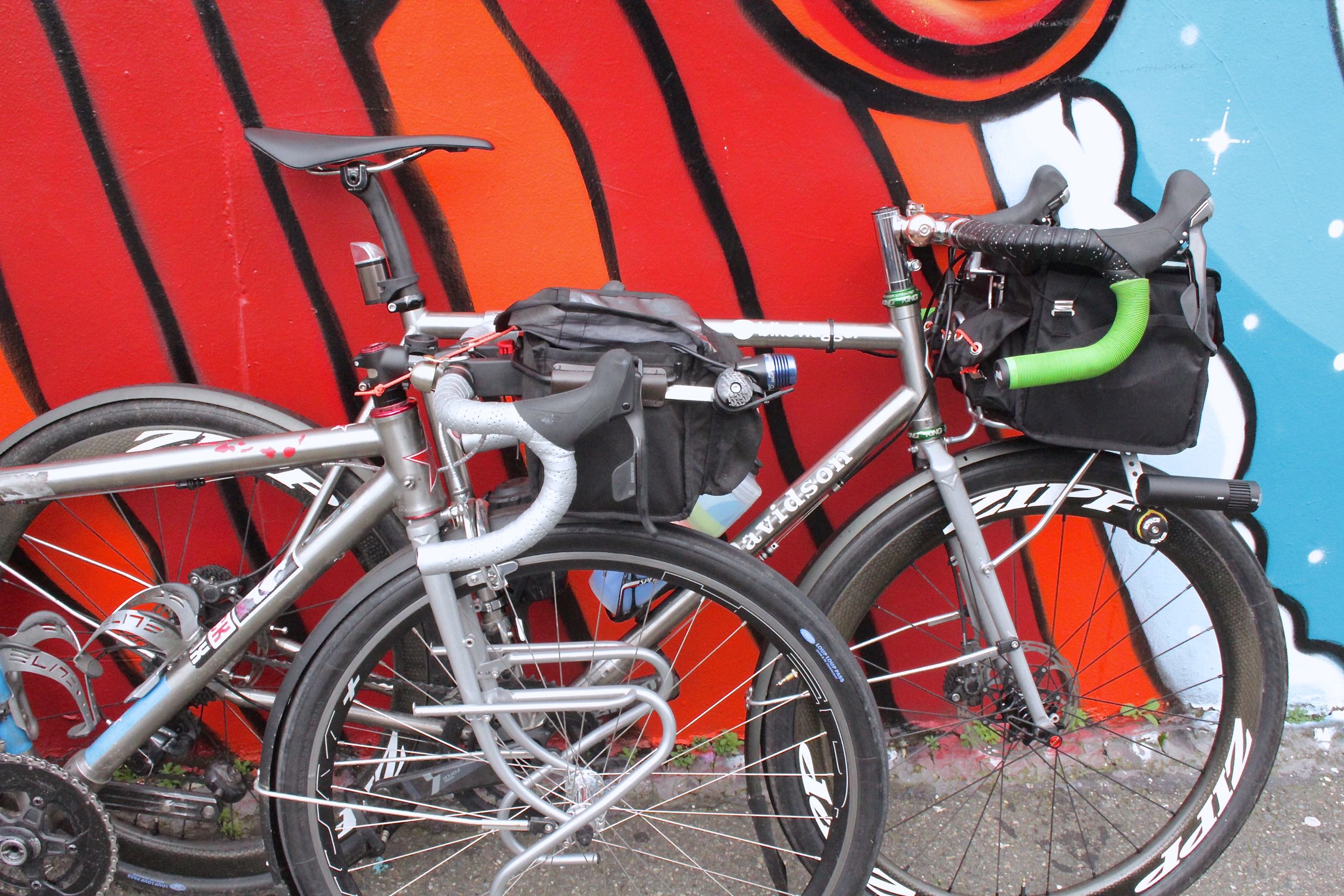
Honestly, it is really hard to fault the compact road handlebar. The short reach gives excellent clearance for my forearms when I sprint out of the saddle, while the smooth curve of the hook means I can position the levers for a long and low cruise position without putting the drop position beyond my reach.
For a pure road bike, the compact dropbar delivers all that I could ask. Yet a “pure road” bike, free of any accoutrements besides water bottles and perhaps a dainty saddle bag, does not represent my default choice for cycling. Whether for commuting or gravel/adventure riding, the capacity and accessibility of a handlebar bag or randonneur bag is very attractive. Instead of jamming your tools, wind vest, snacks, etc into a saddle bag (or awkwardly overstuffing your jersey pockets), you place everything in a bag within easy reach of your hands. But a big handlebar bag might not be the best fit with a typical compact dropbar, because while you’d like to keep the bag’s center of gravity as close as possible to the steering axis the compact dropbar’s short reach(70-80mm) doesn’t leave much space to nestle a handlebar bag. If we could stretch the reach of our handlebar, we could run a shorter stem which would in turn open up space for a capacious bag up front.
In the next couple days, I will review two handlebars that you might want to consider if you too have realized the practical value of bags up front on your bike. The first bar is the Bontrager XXX VR-C, a carbon handlebar that is shaped very similar to the typical “compact road” bar, except that it has about 30mm more reach. The second bar is the Compass Maes Parallel 31.8, an alloy bar that closely mimics the shape of older French bars but fits modern stems.
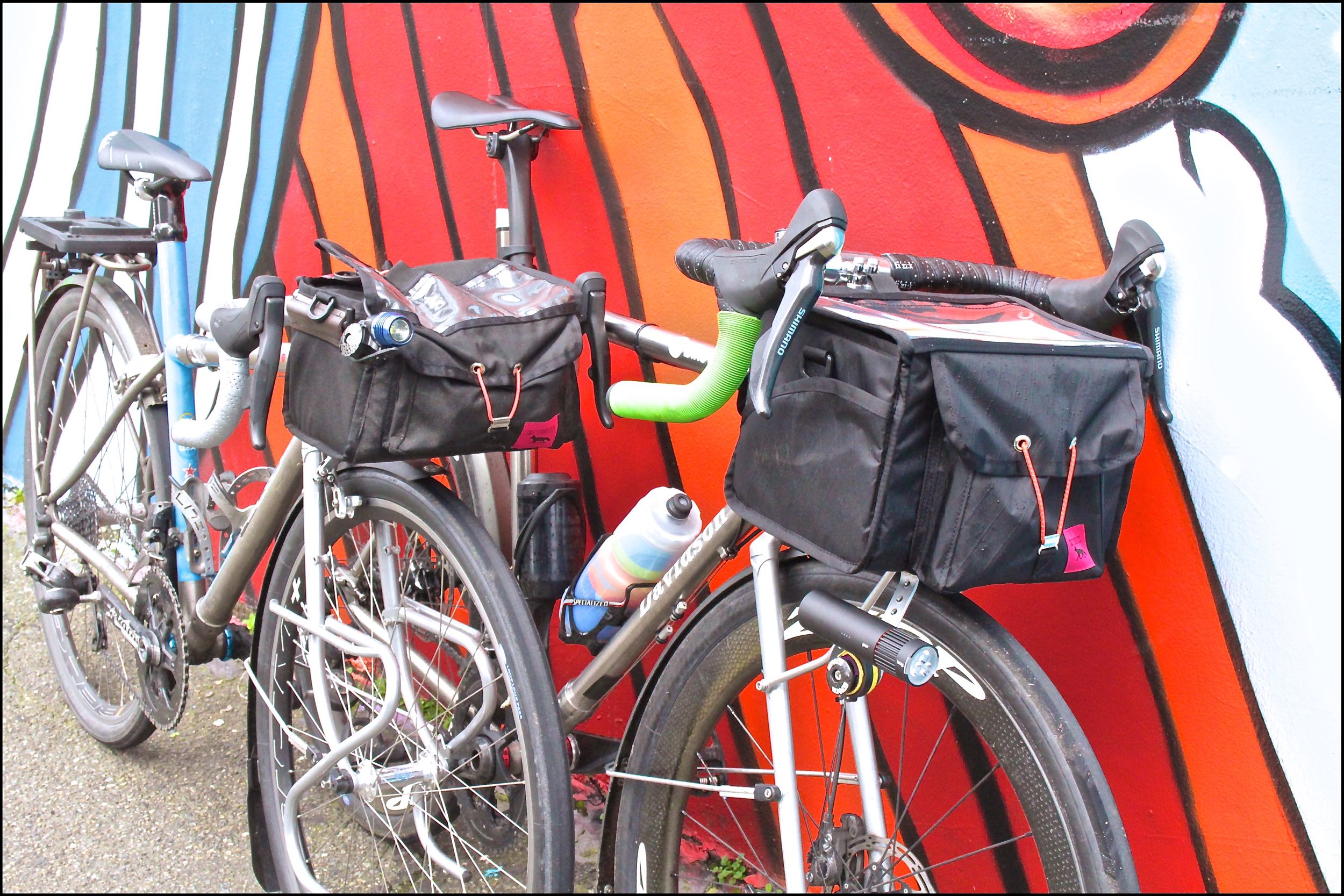
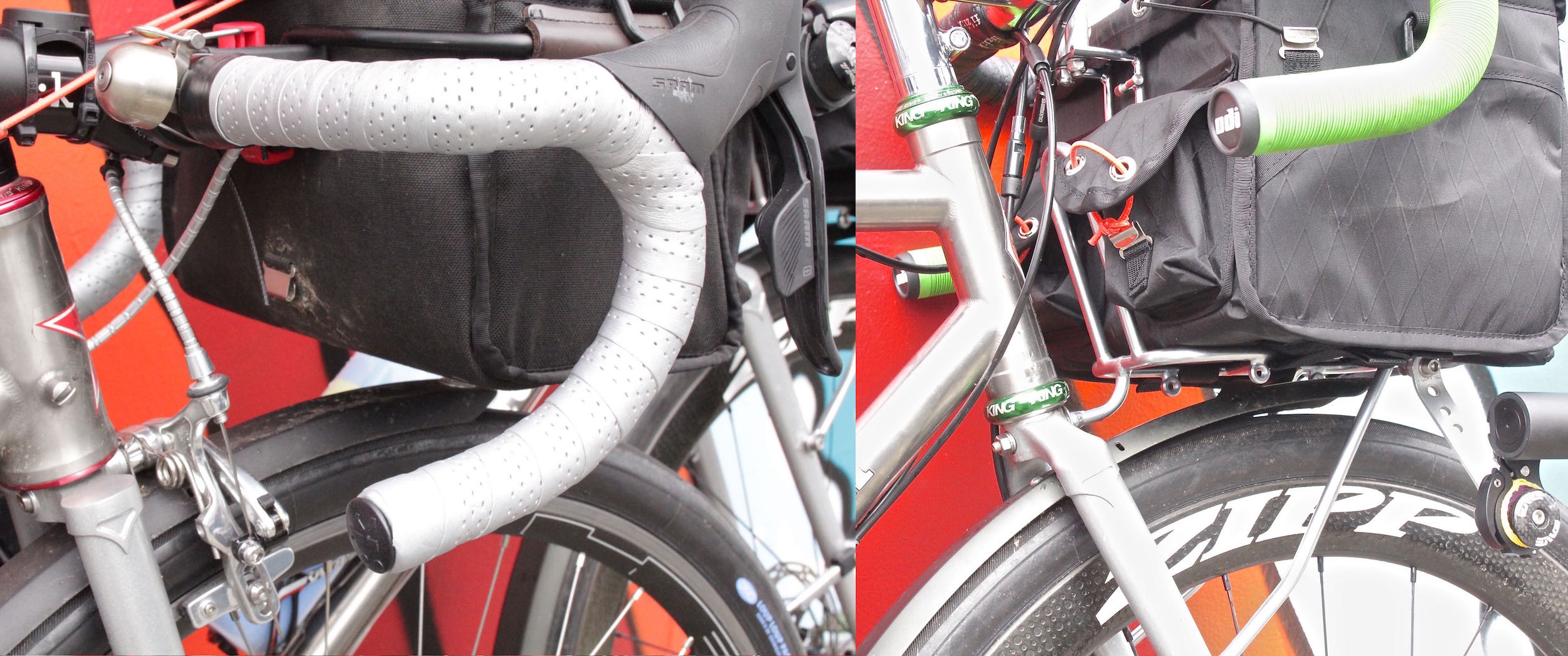
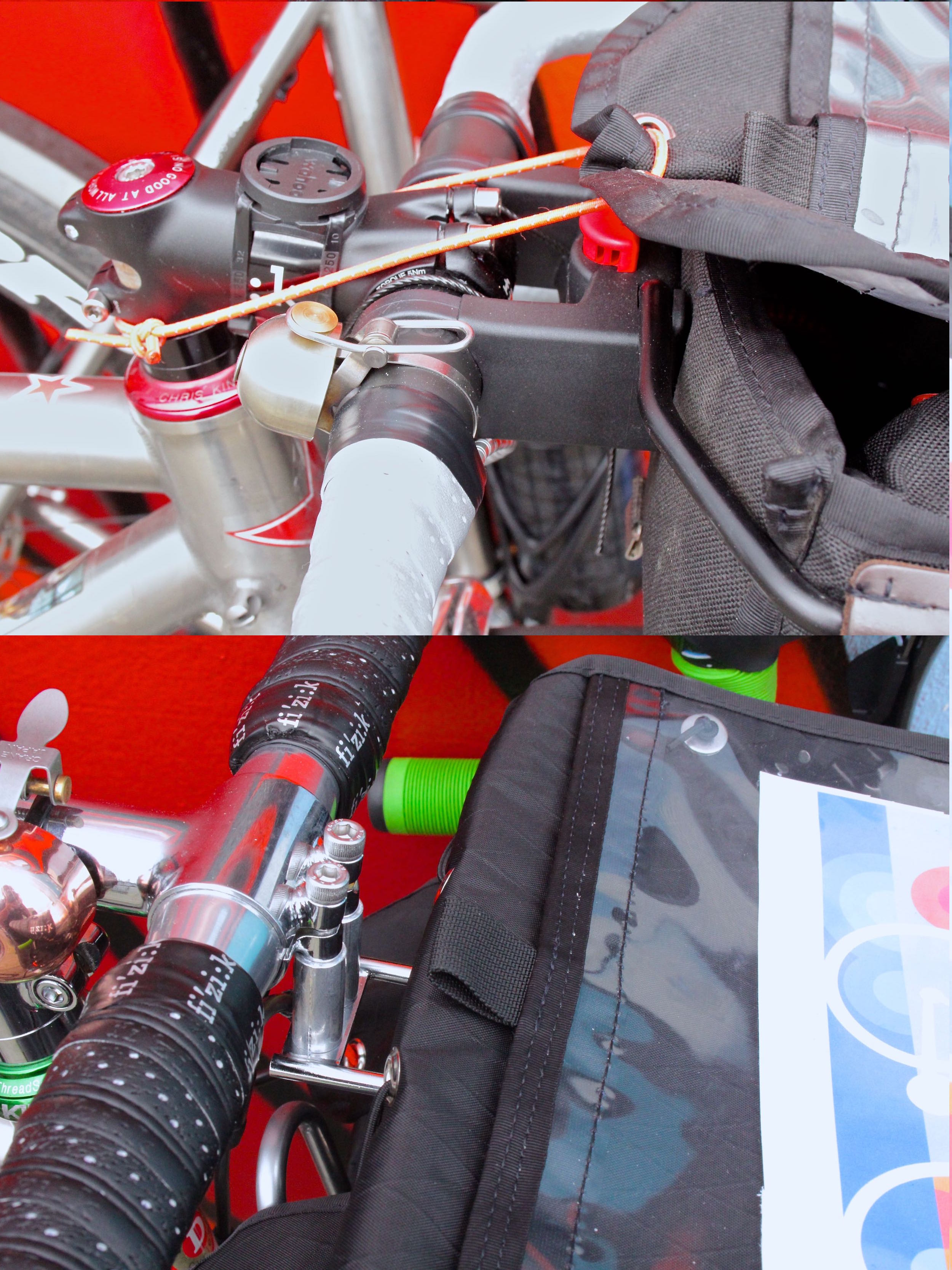
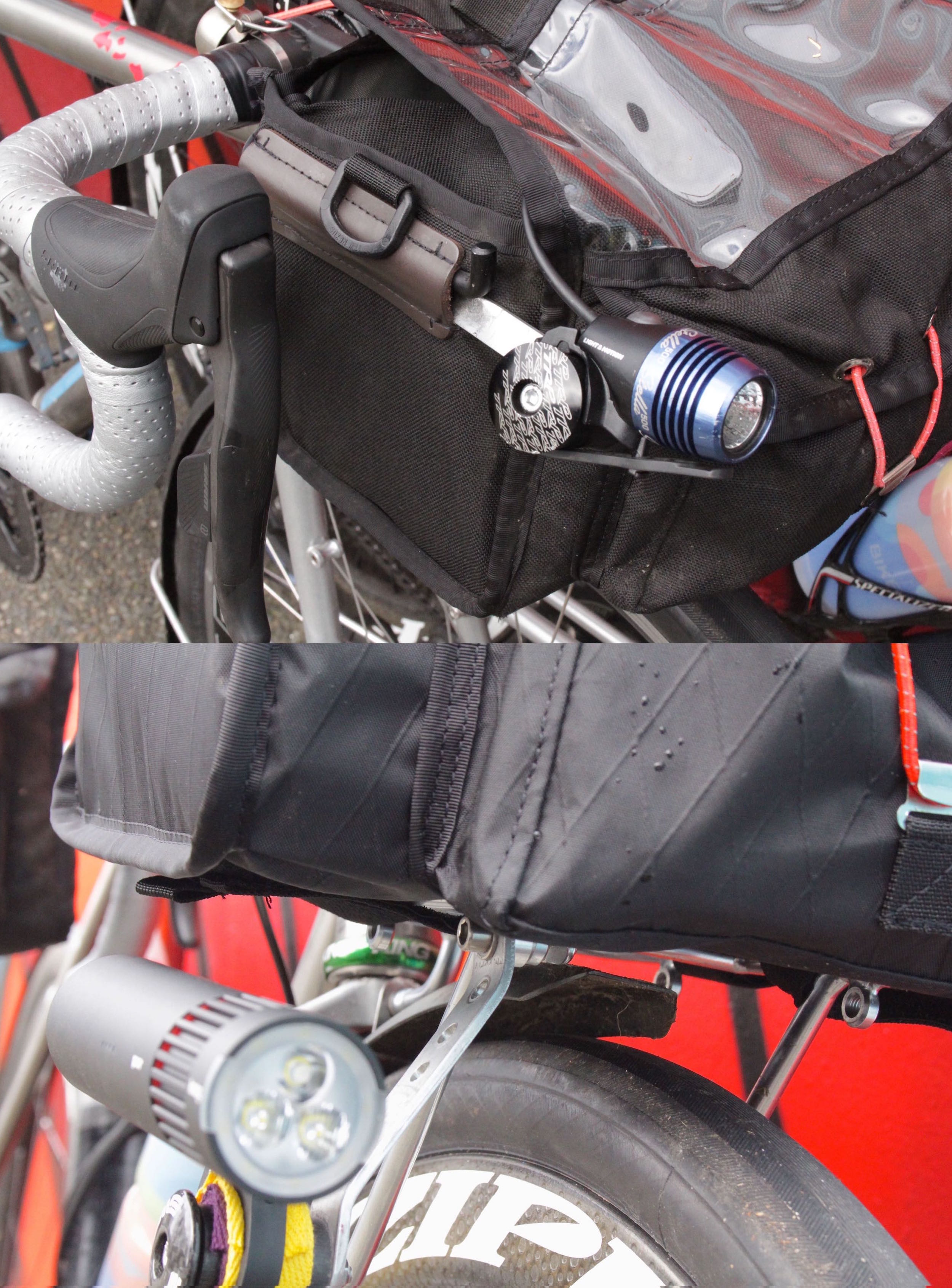
We're riding townies, adventure, and mountain bikes. Find recommendations on our store page. As Amazon Associates we earn from qualifying purchases.